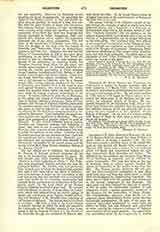

Celestine III, POPE (GIACINTO BOBONE), the first of the Roman Orsini to ascend the Chair of Peter, b. about 1106; d. at Rome, January 8, 1198. He was forty-seven years a cardinal when, in his eighty-fifth year, he was elected (March 30, 1191) successor of Clement III; being only a deacon he was ordained priest (April 13) and consecrated bishop the next day, respectively Holy Saturday and Easter. The following day he anointed and crowned King Henry VI of Germany as emperor, and as empress his queen Constantia. The king was then on his way to Southern Italy to enforce against Tancred the claims of Constantia to the crown of the Two Sicilies. The Roman people, however, did not permit the aforementioned solemnities to take place until both pope and king had aided them to satisfy their wrath against the neighboring Tusculum. The town was levelled with the ground and abandoned to the savage vengeance of the Romans. The aged pope has been blamed for this act of cruelty, in this so unlike his predecessor Innocent II who withstood (1142) a similar passionate insistence of the Romans for the destruction of Tibur (Tivoli). The responsibility, however, rests chiefly on the emperor, whose blood-thirsty Italian career was thus becomingly inaugurated. In spite of the pope the emperor proceeded southward to make good his claims to Sicily, but was defeated and compelled to retire, leaving the empress a prisoner of Tancred, who freed her, at the papal petition. The aged Celestine astonished many by his longanimity in dealing with the young and violent Henry VI who in Germany surpassed his predecessors in cruelty and oppression of the churches. The pope was also slow and cautious in threatening Henry with excommunication for his imprisonment of King Richard the Lion-Hearted whom Henry had caused to be seized (1192) by Duke Leopold of Austria, and delivered to himself, as Richard was on the way back to England, nor was the English king set free until he had paid a great ransom (£100,000). It was a violation of the law of nations that a younger and more vigorous pope would not have so long tolerated. Only in 1193 were the duke and his associates excommunicated and an attempt made to compel restitution of the ransom. Shortly after, on the death of Tancred (1194) Henry VI again crossed the Alps, resolved to finally compass the union of the German Crown with that of the Two Sicilies. Amid incredible cruelties he accomplished his purpose, defied the rights of the pope as overlord of Sicily, deceived the pope with vain promises of a crusade, and would probably have hastened by a generation the memorable conflict of Rome with his son Frederick II had not death carried off the cruel and lawless king, September 28, 1197, in his thirty-sixth year, not, however, before he had induced the pope to acknowledge the aforesaid infant Frederick as King of the Two Sicilies. Celestine himself soon passed away, in the ninety-second year of his age. He showed more resolution in dealing with other princes of Europe, particularly in defense of the ecclesiastical marriage laws. He induced King Alfonso IX of Leon to abandon his project of an incestuous union with a Portuguese princess, and defended with vigour the validity of the marriage of Queen Ingeburg with Philip Augustus of France, to whom he refused a divorce, while he declared invalid the divorce accorded to Philip by the bishops of his kingdom. A serious crusade was the constant ideal of Pope Celestine; he confirmed the new military Order of Teutonic Knights (1191), and favored greatly the Knights Templar and the Hospitallers. St. Malachy of Armagh, St. Bernward of Hildesheim, St. John Gualbert, and St. Ubaldus of Gubbio were canonized by him. (See Henry VI.)
THOMAS J. SHAHAN

